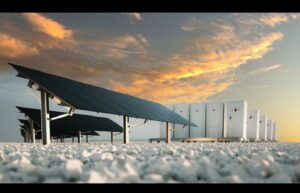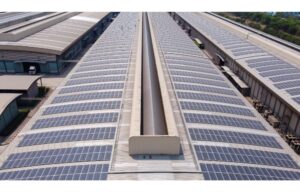- Fitch Solutions’ global solar power outlook sees China and the US as outperformers through to 2030
- China is expected to add around 437 GW new capacity between 2020-end and 2030
- The US is likely to install 151.3 GW new solar capacity during the forecast period
- China is to remain the main supplier of solar components over the decade even as other countries encourage development of domestic supply chain
- Analysts see Namibia as growing its solar power capacity from 145 MW at the end of 2020 to close to 440 MW by 2030
Through 2030, China and the US will continue to maintain their stronghold as the top 2 largest global solar markets, according to the analysts of Fitch Solutions Country Risk & Industry Research. In their outlook for global solar power, they see these 2 nations as the global solar outperformers. They named Namibia as the solar power market to watch out for.
China
Together the 2 markets are expected to account for 57% of the world’s forecasted solar capacity additions. China is likely to add as much as 436.9 GW of new solar power capacity between 2020-end and 2030 ‘accounting for 42% of the global forecasted solar capacity growth’. It will mainly be driven by commercial and residential scale solar systems in addition to continued robust utility scale growth, according to the analysts.
Specifically, the country’s installed solar power capacity will increase from 253.4 GW at 2020-end to 690.3 GW in 2030. As of October 2021, China had installed 282 MW of solar out of more than 1,000 GW installed renewable energy capacity (see China Exceeds 1,000 GW RE Capacity).
Fitch Solutions points out a National Energy Administration (NEA) forecast that sees a potential 130 GW to 170 GW additional capacity that can be added by 2023-end as a result of the government’s mandates for solar installations for residential, commercial and government buildings.
China currently supplies 64% of silicon materials to the world, along with 80% solar PV modules and nearly 100% of solar ingots and wafers. Regardless of the current solar value chain disruption and governments in several countries encouraging domestic PV technology production, China will continue to hold on to its position as the world’s primary supplier of solar power components over the coming decade.
US
The world’s 2nd largest market, the US will see solar power capacity increasing by 151.3 GW during the forecast period, between 2020-end to 2030 with the technology accounting for 9% of the country’s national energy mix. Analysts pin their forecast on a ‘sizeable utility-scale project pipeline and continued momentum for small-scale projects’.
At the same time, under the Biden administration the country is making several positive moves for solar including a proposed 10-year extension for the Investment Tax Credit (ITC) scheme as part of the Build Back Framework for small- and large-scale projects.
“Despite our strong long-term outlook, elevated downside risks will remain over the near term due to elevated prices throughout the global solar value chain as well as ongoing uncertainty in relation to trade policies and tariffs within the US solar sector,” said reads the Fitch Solutions commentary.
Namibia
For this African nation that enjoys very high solar irradiance and a supportive regulatory environment, the analysts forecast cumulative installed solar power capacity to increase from 145 MW at the end of 2020 to close to 440 MW by 2030. It would account for 86% of Namibia’s forecasted non-hydro renewables growth, they add.
It is not just the massive 5 GW solar power complex Namibia is planning with its neighbor Botswana that shines on its solar potential, the analysts also cite other utility scale facilities being planned here including the 81 MW facility of Globeleq Generation and Natura Energy (see Agreement Signed For 81 MW Solar PV Park In Namibia).
There is also international investor interest for the recently unveiled green hydrogen project to be realized by Hyphen Hydrogen Energy which is planned to be powered by 5 GW renewable energy capacity (see Hyphen Hydrogen Energy For Namibia Project).
As per the analysts, “We also highlight ongoing opportunities for distributed generation solar systems given that renewable energy, particularly solar, is also set to play an important role in rural electrification efforts over the coming years.”




